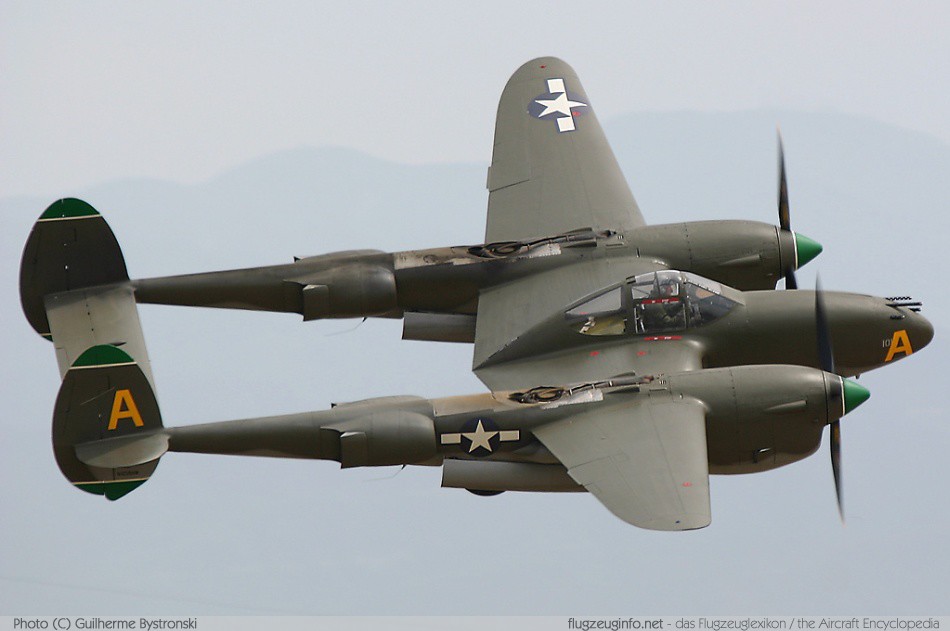262
Here is yet another WWII aircraft recreation. This time, it is the P-38 Lightning. This plane surprisingly only took 10 minuitres to create.
The Lockheed P-38 Lightning was a World War II American fighter aircraft built by Lockheed. Developed to a United States Army Air Corps requirement, the P-38 had distinctive twin booms and a single, central nacelle containing the cockpit and armament. Named "fork-tailed devil" (der Gabelschwanz-Teufel) by the Luftwaffe and "two planes, one pilot" (2飛行機、1パイロット Ni hikōki, ippairotto?) by the Japanese, the P-38 was used in a number of roles, including dive bombing, level bombing, ground-attack, night fighting, photo reconnaissance missions, and extensively as a long-range escort fighter when equipped with drop tanks under its wings.
The P-38 was used most successfully in the Pacific Theater of Operations and the China-Burma-India Theater of Operations as the mount of America's top aces, Richard Bong (40 victories) and Thomas McGuire (38 victories). In the South West Pacific theater, the P-38 was the primary long-range fighter of United States Army Air Forces until the appearance of large numbers of P-51D Mustangs toward the end of the war.
The P-38 was unusually quiet for a fighter, the exhaust muffled by the turbo-superchargers. It was extremely forgiving, and could be mishandled in many ways, but the rate of roll in the early versions was too slow for it to excel as a dogfighter. The P-38 was the only American fighter aircraft in production throughout American involvement in the war, from Pearl Harbor to Victory over Japan Day.



The Lockheed P-38 Lightning was a World War II American fighter aircraft built by Lockheed. Developed to a United States Army Air Corps requirement, the P-38 had distinctive twin booms and a single, central nacelle containing the cockpit and armament. Named "fork-tailed devil" (der Gabelschwanz-Teufel) by the Luftwaffe and "two planes, one pilot" (2飛行機、1パイロット Ni hikōki, ippairotto?) by the Japanese, the P-38 was used in a number of roles, including dive bombing, level bombing, ground-attack, night fighting, photo reconnaissance missions, and extensively as a long-range escort fighter when equipped with drop tanks under its wings.
The P-38 was used most successfully in the Pacific Theater of Operations and the China-Burma-India Theater of Operations as the mount of America's top aces, Richard Bong (40 victories) and Thomas McGuire (38 victories). In the South West Pacific theater, the P-38 was the primary long-range fighter of United States Army Air Forces until the appearance of large numbers of P-51D Mustangs toward the end of the war.
The P-38 was unusually quiet for a fighter, the exhaust muffled by the turbo-superchargers. It was extremely forgiving, and could be mishandled in many ways, but the rate of roll in the early versions was too slow for it to excel as a dogfighter. The P-38 was the only American fighter aircraft in production throughout American involvement in the war, from Pearl Harbor to Victory over Japan Day.
| Role | Heavy fighter |
|---|---|
| Manufacturer | Lockheed |
| Designer | Clarence "Kelly" Johnson |
| First flight | 27 January 1939 |
| Introduction | 1941 |
| Retired | 1965 Honduran Air Force |
| Primary users | United States Army Air Forces Free French Air Force |
| Produced | 1941–45 |
| Number built | 10,037 |
| Unit cost | US$97,147 in 1944 (equivalent to $1,301,476 in 2014) |
| Developed into | Lockheed XP-49 Lockheed XP-58 |


| Progress | 100% complete |
| Tags |
tools/tracking
3018329
2
lockheed-p-38-lightning-3018329




















Create an account or sign in to comment.